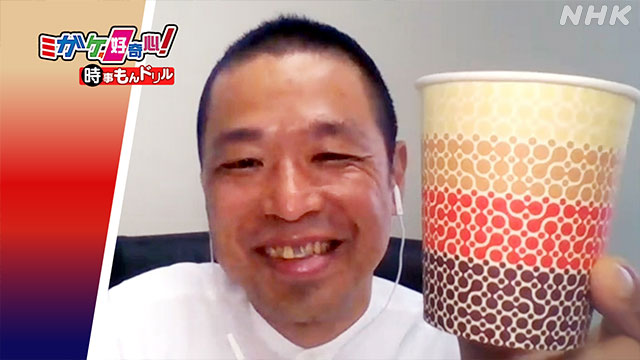Unprepared disaster prevention “Phase-free” September 15, 15:29
Japan has been frequently exposed to threats such as earthquakes and typhoons.
Recently, new approaches have been attracting attention as disaster countermeasures.
That is "phase-free" disaster prevention that we do not prepare for.
The concept of making things and services around us useful in our daily lives and in the event of a disaster has been adopted in various fields.
Required disaster countermeasures
First, let's think about familiar disaster countermeasures.
There are various types of emergency supplies, such as evacuation drills at schools and workplaces, and emergency bags prepared at home.
Knowledge of these preparations is also tested in junior high school entrance examinations.
So, are you actually preparing for disasters based on your knowledge?
It can be surprisingly difficult.
Therefore, "phase-free" is attracting attention.
What is Phase Free?
Phase-free phase means "position".
We have prepared disaster prevention supplies in preparation for the phase of "disaster".
And I've been thinking about it separately from what I use in the phase of "daily life".
Phase-free, on the other hand, is a way of thinking that removes the barriers between disasters and daily life, or in other words, makes things “free” and creates things that are useful in both situations.
Useful in times of disaster
Let's look at a concrete example.
For example, there is a "bench" in a park in Toshima Ward, Tokyo.
There is a storage space under the seat, and a "furnace" is put inside.
In the event of a disaster, it can be taken out and used for cooking.
A "jacket" that incorporates the concept of phase-free has also been developed.
Stop proposing to “prepare”
Mr. Yuiyuki Sato, the representative director of the Phase Free Association, advocates making things that are used in everyday life usable in the event of a disaster.
I specialize in disaster prevention engineering, and have worked on regional disaster prevention to prevent disaster damage, but I have been heartbroken by the reality that damage cannot be stopped in various places.
Ms. Sato:
“Every time I hear information about disasters, I think, ‘Many people have died. We have lost our livelihoods. "
One of the issues I have felt is the difficulty of preparing for disasters, which I mentioned earlier.
Even if they held workshops, they only temporarily raised awareness of disasters, and it seems that they have reached phase-free.
Mr. Sato:
“If it is difficult to be prepared, let’s stop proposing to be prepared. It would be nice if the things we usually use would be useful in an emergency. I thought I could protect it."
“Phase-free” useful in power outages
In fact, there are cases where things that we use every day come in handy in times of disaster.
One of them was when Typhoon No. 19 caused a power outage in Chiba Prefecture in 2019.
It seems that people who did not have an emergency generator were able to secure a power supply by pulling electricity from a hybrid car.
Mr. Sato says that this is also phase-free.
“Hakari” paper cup
And now, there is a growing movement to change everyday things into a phase-free phase with a little idea.
Mr. Sato showed me a paper cup.
Each 50ml is color-coded and can be used like a "measuring cup".
Ms. Sato:
"In an emergency, for example, when a mother holding a baby wants to give powdered milk at an evacuation center, she suddenly wonders, 'What are you going to use to measure the amount?' It becomes inconvenient."
If you have a paper cup with a scale, you can rest assured even if you don't have a measuring tool at the shelter.
Nursery school is also phase-free
Phase-free thinking is also incorporated into the design of the building.
One example is a nursery school in Katsushika Ward, Tokyo.
It is built in a residential area at 0 meters above sea level.
The three-story rooftop is usually used as a playground for children, but in the event of a disaster, neighbors can evacuate.
The stairs leading to the rooftop are gentle, so even small children and the elderly can move safely.
There is also space for up to 300 people to sit and wait for a helicopter rescue.
Learning about tsunamis with math
Surprisingly, there are also examples of school classes being phase-free.
This is an elementary school in Naruto City, Tokushima Prefecture, which is expected to be damaged by a large tsunami due to a huge Nankai Trough earthquake.
In a math class held last year, we compared the speed of ostriches and giraffes with the speed of a tsunami.
While learning how to find speed, the content also made me aware of tsunamis.
A child who experienced this class said, "I thought the tsunami was much faster than us."
By incorporating the perspective of disasters into everyday learning, it is expected that children will be able to see disasters more personally.
Mr. Sato:
“In order to solve disasters, we have to think of a way to reach as many people as possible. I hope we can solve it."
I think that phase-free ideas are hidden in various places.
I would like to raise awareness of disaster prevention while considering future possibilities.
In "Migake, curiosity!" of "Weekly Maruwaki News" (broadcast at 8:25 am on Sundays), we will delve into the news every week on topics such as current affairs presented in the entrance examination.
Let's think together about "why?"
On the corner homepage, you can also review the past.
Please take a look at the link below.
https://www3.nhk.or.jp/news/special/maruwaka-migake/

